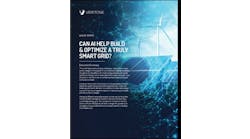Sometimes one microgrid in a single footprint is not enough. Sometimes a community needs a nested microgrid — several separate microgrids in one — to take energy reliability to a whole new level.
A NY Prize contender, the Town of New Paltz, N.Y. has proposed such a project, a $12 million nodular microgrid to maintain energy supplies for critical town services.
Nested within the microgrid are 10 independent zones, or nodes, each with its own energy resources to serve one or more of the critical facilities within its geographic footprint.
In all, the nodes would serve 25 critical facilities – a local hospital, assisted living centers, police, fire and rescue stations, public shelters, municipal water and wastewater systems, schools, housing, gas stations, grocery stores and other vital assets. (See listing of nodes below.) The State University of New York (New Paltz), which is planning its own solar project, also may be part of the nested microgrid.
Only a few of the critical facilities now have back-up generators. So the nodes – powered by a combination of new and existing solar, along with combined heat and power (CHP), battery storage and back-up generators – would significantly heighten safety and security during a crisis.
“In addition to directly providing resilient energy services for several hundred housing units for low-income and vulnerable populations, the New Paltz Microgrid will directly or indirectly benefit all 14,000 residents of New Paltz, plus 8,000 SUNY students, and by extension the 182,000 residents of Ulster County,” says a project feasibility study filed with the NY Prize.
How a nested microgrid works
During a power outage the nodes could island from the main grid and serve the facilities with their own distributed generation.
On days when the central grid is operating normally, the microgrid nodes could provide grid support and benefits, such as congestion relief, ancillary services and line loss reduction
The 10 microgrid nodes would not be physically interconnected to each other, except insofar as they all are embedded in the distribution system of the local utility, Central Hudson Gas & Electric.
A microgrid controller would be imbedded in each node to control its energy resources individually, along with a hosted master controller in the microgrid network operations center (NOC) that can operate each microgrid node separately or collectively.
In the event of a grid power outage, utility-controlled, remotely operated switches would isolate each microgrid node. The node would then be powered with its own distributed energy resources.
Designed for efficiency
The design aims for efficiency. Between 80 and 86 percent of demand is met through on-site energy, with the remainder coming from the grid.
Each node is sized to serve the critical facilities within its footprint. The nodes can function together and share resources (except during the few hours per year when demand peaks). So the design avoids over-building the resources within each node. The goal is to serve microgrid loads more efficiently, more cost effectively, and with lower emissions per unit of energy consumed.
With sufficient generating capacity to meet average demand during a major outage, the microgrid could support islanded operations for at least seven days, with multi-week operation likely.
The microgrid design also avoids reliance on vulnerable overhead lines by isolating each node group separately, and employing new underground cable segments in key areas.
In a feasibility study filed with the NY Prize, project partners say that the project will:
- Produce net economic benefits to customers and the community in excess of its life-cycle costs
- Increase the community’s energy resiliency, especially at critical facilities
- Serve the community’s strategic goals, most notably providing a platform for ongoing reductions in fossil fuel consumption.
The microgrid is expected to be developed, owned, and operated by a private-public partnership, including individuals, companies and non-profits through a variety of private and public finance mechanisms. The internal rate of return is expected to be 6.4 percent for the partnership.
The project is one of 83 community microgrids that won funds for a feasibility study during Phase 1 of the NY Prize, a state-sponsored competition to encourage microgrid development.
Partners: Town and Village of New Paltz, SUNY-New Paltz, New Paltz Central School District, New York State Department of Environmental Conservation Region 3 Office, Health Alliance of the Hudson Valley, Hitachi, Central Hudson Gas & Electric, Microgrid Institute, Green Energy Corp. and TeMIX.
Ten nodes of the New Paltz microgrid
Node 1 – New Paltz Wastewater Treatment Plant
Node 2 – Woodland Pond Care Center
Node 3 – Mt. Rest Road Pumping Station
Node 4 – SUNY Eliting Gym, SUNY Wellness Center, and SUNY Student Health Center
Node 5 – New Paltz High School
Node 6 – New Paltz Rescue Squad
Node 7 – NYS Department of Environmental Conservation (DEC), Institute for Family Health,
Meadowbrook Farms II Apartments, ShopRite Grocery, Stop & Shop Grocery, Sunoco Gas
Node 8 – Dedrick’s Pharmacy, Convenient Deli, and New Paltz Middle School
Node 9 – New Paltz Municipal Center, My Market Grocery, ZNE Housing Development, New Paltz Community Center & Municipal Pool, Duzine Elementary School, and Stewarts Convenience Store
Node 10 – Fire Station #2.
The source of this information is the NY Prize Feasibility Studies and NY Prize Stage 1 Winner, offered by the New York State Energy and Research Development Authority (NYSERDA).
Read more about microgrids here.






